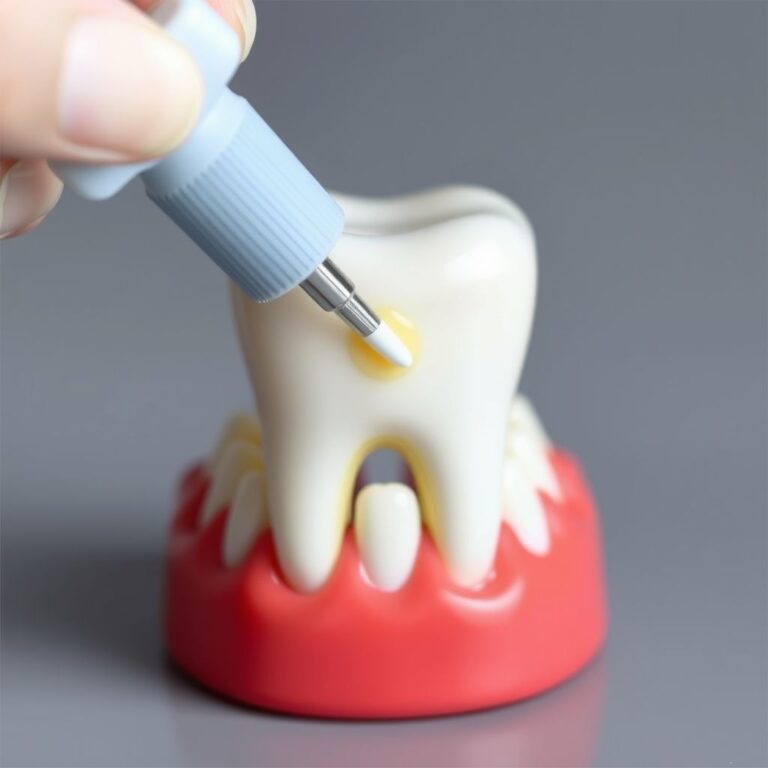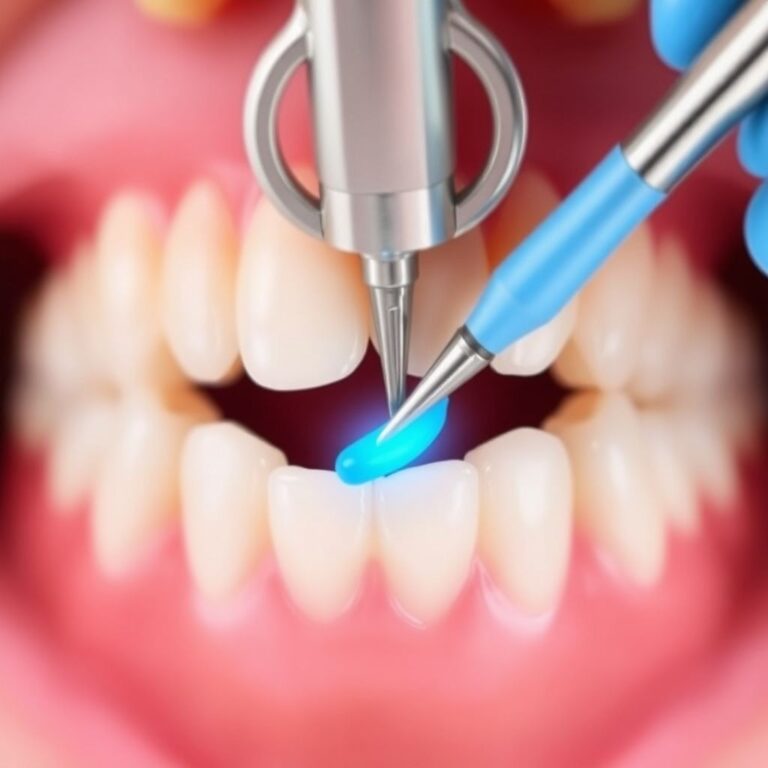The Complete Guide to the average cost of dental fillings
- On
- InDENTAL FILLING
The faint twinge of sensitivity to a sip of ice water, the fleeting discomfort when biting into a piece of chocolate, or the dreaded pronouncement from your dentist after a routine check-up: “You have a cavity.” For millions, this common dental diagnosis is immediately followed by a wave of anxiety, not just about the procedure itself, but about the potential financial burden it represents. The question, “How much is this going to cost?” echoes in the minds of patients, often shrouded in confusion and a lack of transparent information. The world of dental fillings is far more complex than a simple price tag. It is a landscape shaped by a confluence of material science, clinical expertise, geographic economics, and individual insurance policies. This article aims to be your definitive guide, demystifying the average cost of dental fillings by delving deep into every factor that influences the final bill. We will move beyond simplistic national averages and empower you with the knowledge to understand the “why” behind the cost, navigate the intricacies of insurance, explore financial alternatives, and ultimately, make an informed decision that balances your oral health needs with your financial reality. Consider this not just an article about the price of fixing a tooth, but a comprehensive exploration of how to strategically invest in your long-term well-being.

Table of Contents
ToggleChapter 1: The Anatomy of a Filling – Understanding the Procedure and Its Purpose
Before we can intelligently discuss cost, we must first understand the product and service we are paying for. A dental filling is not a commodity; it is a custom-crafted, biocompatible restoration designed to restore the form and function of a tooth damaged by decay.
What is a Dental Filling?
A dental filling is a material used to fill a cavity—a hole in a tooth—created by a dentist after removing decayed tooth structure. Its primary purposes are to:
-
Restore Integrity: Return the tooth to its original shape, allowing for normal chewing and biting.
-
Prevent Further Decay: Seal off the vulnerable area from bacteria, halting the progression of decay.
-
Maintain Strength: Prevent the cavity from weakening the overall tooth structure, which could lead to fractures or more severe damage.
The Cavity Process: Why Fillings are Necessary
Tooth decay, or dental caries, is a bacterial infection. The bacteria in plaque, a sticky biofilm on teeth, feed on sugars from food and drinks, producing acids. These acids demineralize the hard enamel surface of the tooth, eventually creating a small hole or cavity. Once the cavity extends past the enamel into the softer, inner dentin layer, the process accelerates, and the tooth cannot repair itself. Without intervention, the decay will reach the pulp (the nerve and blood vessel center of the tooth), causing a painful abscess and necessitating a root canal or even extraction. A filling is the most common and conservative treatment to stop this process in its tracks.
The Step-by-Step Procedure
The placement of a filling is a precise, multi-step procedure that justifies its professional fee:
-
Anesthesia: The dentist administers a local anesthetic to numb the tooth and surrounding area, ensuring a pain-free experience.
-
Isolation: The tooth is often isolated with a small rubber dam or other aids to keep it dry and free of saliva during the procedure.
-
Cavity Preparation: Using a high-speed drill, laser, or air abrasion system, the dentist meticulously removes all decayed tooth structure. The preparation is shaped to ensure the filling will be retained securely.
-
Etching and Bonding: For tooth-colored fillings, the dentist etches the prepared tooth surface with a mild acid to create microscopic pores. A bonding agent (a liquid plastic) is then applied, which flows into these pores and hardens, creating a powerful mechanical and chemical bond between the tooth and the filling material.
-
Placement and Curing: The filling material is placed in layers. For composite resins, each layer is hardened (cured) with a special bright blue light.
-
Shaping and Polishing: Once the filling is fully placed and hardened, the dentist trims away any excess material, sculpts it to match the tooth’s natural contours, and polishes it to a smooth finish.
Chapter 2: The Primary Cost Drivers – What Really Determines Your Final Bill?
The cost of a dental filling is not a single number. It is a variable sum constructed from several key factors. Understanding these drivers is the first step to demystifying your dental bill.
1. The Material Matrix: Amalgam vs. Composite vs. Gold vs. Ceramic
This is the single most significant factor influencing cost. The choice of material involves a trade-off between durability, aesthetics, biocompatibility, and price. We will explore each material in exhaustive detail in Chapter 3, but a brief overview of their cost positioning is essential here. Amalgam (silver fillings) is generally the least expensive option, followed by composite resin (tooth-colored). Glass ionomer falls in a similar range to composite but is used for specific situations. Gold and porcelain/ceramic fillings are significantly more expensive, often costing two to five times more than a composite filling due to the cost of the raw materials and the more labor-intensive fabrication process.
2. The Size, Location, and Number of Surfaces
A small cavity on the easy-to-access biting surface of a tooth (an occlusal filling) will cost less than a large cavity that wraps around between two teeth (a multi-surface mesial-occlusal-distal, or MOD, filling). Larger fillings require more material, more time for placement, and greater skill to properly contour and contact the adjacent tooth. Furthermore, cavities on front teeth (anterior) can sometimes be more costly than those on back teeth (posterior) when using composite, as achieving a perfectly natural, invisible restoration on a highly visible tooth demands exceptional artistic skill.
3. Geographic Location and Practice Overhead
The cost of living and operating a business varies dramatically across the country and even within regions. A dental practice in downtown Manhattan or San Francisco has exponentially higher overhead—rent, staff salaries, insurance, utilities—than a practice in a rural town in the Midwest. These operational costs are inevitably passed on to the patient. According to various dental industry surveys, the Northeast and West Coast typically have the highest average dental fees, while the South and Midwest have the lowest.
4. The Dentist’s Expertise and Practice Type
A dentist with 30 years of experience and advanced training in cosmetic or restorative dentistry may charge more for their services than a recent graduate. Their expertise often translates to a higher quality, more durable, and more aesthetically pleasing result. Additionally, the type of practice matters. A specialist, such as a prosthodontist, will charge more than a general dentist. Fees may also differ between a large, corporate-owned dental group and a small, private solo practice.
Chapter 3: A Deep Dive into Filling Materials – Pros, Cons, and Cost Breakdown
This chapter provides a comprehensive analysis of the most common dental filling materials, arming you with the knowledge to discuss options with your dentist knowledgeably.
Dental Amalgam: The Budget-Friendly Workhorse
-
Composition: A mixture of liquid mercury (approx. 50%) and a powdered alloy of silver, tin, copper, and sometimes other trace metals.
-
Average Cost: $50 – $150 per filling (without insurance). Often the 100% coverage option for posterior teeth under insurance plans.
-
Pros:
-
Durability: Extremely strong and wear-resistant, often lasting 10-15 years or more.
-
Cost-Effective: The least expensive filling material.
-
Technique-Insensitive: Less sensitive to moisture contamination during placement compared to composite, making it reliable in difficult-to-isolate areas.
-
-
Cons:
-
Aesthetics: Dark silver/gray color is not tooth-colored and is considered unaesthetic.
-
Tooth Structure: Requires more removal of healthy tooth structure to create a retentive undercut shape.
-
Staining: Can cause a grayish discoloration of the tooth over time.
-
Allergy/Controversy: Rare mercury allergies and ongoing public debate about mercury safety, though major health organizations (FDA, ADA) affirm its safety for most people.
-
Composite Resin: The Aesthetic Champion
-
Composition: A mixture of plastic resin and finely ground glass-like particles.
-
Average Cost: $90 – $300 per filling (without insurance). Cost increases with the number of surfaces.
-
Pros:
-
Aesthetics: Can be precisely matched to the shade of your natural teeth, making it virtually invisible.
-
Bonding: Chemically bonds to the tooth structure, which can strengthen the tooth.
-
Conservative Preparation: Requires less removal of healthy tooth structure compared to amalgam.
-
Versatility: Also used for repairing chipped teeth and cosmetic contouring.
-
-
Cons:
-
Durability: Less wear-resistant than amalgam or gold; typically lasts 5-10 years.
-
Time & Skill: Takes longer to place and is highly dependent on the dentist’s skill and technique.
-
Staining: Can stain over time from coffee, tea, red wine, and tobacco.
-
Cost: More expensive than amalgam.
-
Glass Ionomer: The Specialized Performer
-
Composition: A blend of acrylic and fluoroaluminosilicate, a component of glass.
-
Average Cost: $80 – $200 per filling.
-
Pros:
-
Fluoride Release: Slowly releases fluoride, which can help prevent further decay, making it ideal for certain pediatric fillings or root surface cavities.
-
Biocompatibility: Bonds chemically to tooth structure with a low sensitivity.
-
-
Cons:
-
Weakness: Significantly weaker and less durable than composite resin.
-
Aesthetics: More opaque and less aesthetically pleasing than composite.
-
Wear: Wears down faster and is more prone to fracture.
-
Gold Foil & Cast Gold: The Premium Long-Term Investment
-
Composition: Pure gold (foil) or a gold alloy (cast).
-
Average Cost: $250 – $4,500+ per filling. Cast gold inlays/onlays are at the high end of this range.
-
Pros:
-
Exceptional Durability: Biocompatible and can last for decades (20+ years), often outlasting the patient.
-
Strength: Withstands chewing forces exceptionally well without fracturing.
-
Precision: Cast gold restorations are fabricated in a lab for a perfect, precise fit.
-
-
Cons:
-
Cost: The most expensive option due to material cost and lab fees.
-
Aesthetics: Not tooth-colored, which is undesirable for many patients.
-
Visits: Requires at least two dental appointments.
-
Conductivity: Can cause thermal sensitivity (to hot and cold) for some.
-
Porcelain/Ceramic Inlays and Onlays: The Indirect Restoration
-
Composition: A high-strength dental ceramic.
-
Average Cost: $500 – $4,500+ per restoration. Cost is similar to gold.
-
Pros:
-
Superior Aesthetics: The most natural-looking restoration, stain-resistant.
-
Durability: Very strong and long-lasting (15-30 years).
-
Biocompatibility: Excellent tissue response and resistance to plaque.
-
-
Cons:
-
Cost: As expensive as, or more than, gold.
-
Brittleness: Can fracture under heavy biting forces, especially in thinner sections.
-
Visits: Requires two or more appointments and a dental laboratory.
-
Comprehensive Comparison of Dental Filling Materials
| Material | Average Cost (Per Filling) | Typical Longevity | Key Advantages | Key Disadvantages | Best For |
|---|---|---|---|---|---|
| Amalgam | $50 – $150 | 10-15+ years | Highly durable, Cost-effective, Less technique-sensitive | Poor aesthetics, Removes more healthy tooth | Non-visible back teeth, Patients on a tight budget |
| Composite Resin | $90 – $300 | 5-10 years | Excellent aesthetics, Bonds to tooth, Conservative prep | Less durable, Can stain, Higher cost, Skill-sensitive | Visible front and back teeth, Patients seeking a natural look |
| Glass Ionomer | $80 – $200 | 5 years | Releases fluoride, Chemical bond | Weak, Wears easily, Poor aesthetics | Non-load bearing areas, Baby teeth, Root cavities |
| Cast Gold | $250 – $4,500+ | 20-30+ years | Extremely durable, Biocompatible, Precise fit | Very high cost, Poor aesthetics, Multiple visits | Patients seeking the longest-lasting option, Large restorations |
| Porcelain/Ceramic | $500 – $4,500+ | 15-25+ years | Superior aesthetics, Stain-resistant, Durable | Very high cost, Can be brittle, Multiple visits | Large, visible restorations where aesthetics and strength are paramount |
https://i.imgur.com/placeholder-materials.jpg Caption: A side-by-side visual comparison helps illustrate the aesthetic differences between amalgam, composite, and gold fillings.
Chapter 4: The Insurance Equation – Navigating Coverage, Deductibles, and Co-pays
Dental insurance fundamentally changes the cost calculus for most patients, but its complexity often creates confusion.
How Dental Insurance Typically Covers Fillings
Most dental insurance plans follow a 100-80-50 coverage structure:
-
Preventive Care (100%): Cleanings, exams, X-rays are often fully covered.
-
Basic Procedures (80%): Fillings, extractions, periodontal treatment are typically covered at 80%, meaning you pay a 20% co-payment.
-
Major Procedures (50%): Crowns, bridges, dentures, and sometimes root canals are covered at 50%.
Understanding UCR Rates, PPOs, and HMOs
-
UCR (Usual, Customary, and Reasonable): This is the maximum fee your insurance company will pay for a procedure in your geographic area. Crucially, this is not necessarily what your dentist charges. If your dentist’s fee is $200 for a composite filling and your insurance UCR is $150, they will pay 80% of $150 ($120), and you will be responsible for the remaining $80 (your 20% co-pay plus the $50 balance above the UCR).
-
PPO (Preferred Provider Organization): You have the freedom to see any dentist, but you pay less if you see a dentist within the insurance company’s “preferred” network. These dentists have agreed to contracted (lower) fees.
-
HMO (Health Maintenance Organization): You must see a dentist within the HMO network for coverage. You typically pay a fixed co-pay per procedure, but your choices are severely limited.
The “Back-To-Metal” Clause and Its Implications
This is one of the most common points of confusion. Many insurance plans include a clause stating that if a tooth previously had an amalgam filling, they will only pay the cost of replacing it with another amalgam filling. If you and your dentist choose a composite filling for the replacement, the insurance company will only pay up to the amalgam cost, and you will be responsible for the entire difference. Always check your plan’s benefits before proceeding with treatment.
Chapter 5: The Financial Burden Without Insurance – Strategies for Affordable Care
For the approximately 70 million Americans without dental insurance, the cost of a filling can be a significant financial stressor. However, several viable pathways can make care accessible.
Dental Savings Plans: An Alternative to Insurance
These are not insurance. Instead, you pay an annual membership fee (e.g., $80-$200 for an individual) to gain access to a network of dentists who have agreed to provide services at a discounted fee. A filling that normally costs $200 might be available for $130. There are no annual maximums, deductibles, or waiting periods.
Dental School Clinics: Supervised, Low-Cost Care
Dental schools need patients for their students to gain experience. Treatment is provided by dental students who are closely supervised by licensed, experienced faculty dentists. The cost is typically 30-50% less than a private practice. The trade-off is that appointments take significantly longer.
Community Health Centers (FQHCs) and Government Assistance
Federally Qualified Health Centers (FQHCs) provide healthcare, including dental care, on a sliding fee scale based on your income and family size. These are a critical safety net for low-income individuals and families. State and local health departments may also offer similar programs.
Payment Plans and Medical Credit Cards
Many private dental offices offer in-house payment plans, allowing you to pay for your treatment over several months. Third-party medical credit cards like CareCredit are also widely accepted. They often offer a promotional period of 6, 12, or 18 months with 0% interest, if paid in full by the end of the promotional period. It is crucial to understand the terms, as deferred interest can be substantial if the balance is not paid in time.
Chapter 6: The Long-Term Economic View – Cost vs. Value and Longevity
The cheapest option is not always the most economical in the long run. A sophisticated understanding of dental costs requires a lifetime perspective.
The True Cost-Per-Year of Different Materials
Let’s perform a simplified calculation:
-
Amalgam: $150 cost / 12.5-year lifespan = $12 per year.
-
Composite: $250 cost / 7.5-year lifespan = $33.33 per year.
-
Gold Onlay: $1,500 cost / 25-year lifespan = $60 per year.
While the composite has a higher annual cost than amalgam in this model, the value of its aesthetics and tooth-preserving nature may justify the expense for many. Gold, while having the highest annual cost, may prevent the need for a crown for decades, potentially saving thousands of dollars down the line.
The Risk and Cost of Replacement vs. More Extensive Procedures
Every time a filling is replaced, a small amount of healthy tooth structure is also removed. Over a lifetime, this can weaken the tooth. A large, frequently replaced composite filling might eventually lead to a situation where the tooth can no longer support a filling and requires a crown—a procedure that can cost $1,000-$2,500. Investing in a more durable restoration like a gold or ceramic onlay early on, while more expensive upfront, could preserve the tooth’s structure and avoid the need for a crown altogether.
Preventative Care: The Ultimate Cost-Saving Strategy
The most cost-effective dental strategy is to avoid cavities entirely. The cost of a lifetime of diligent preventative care—fluoride toothpaste, floss, regular cleanings, and a balanced diet—is a fraction of the cost of even a single moderate restoration. An ounce of prevention is worth a pound of cure, and in dentistry, this adage is financially indisputable.
Chapter 7: Pediatric Dental Fillings – Special Considerations for Children
Children’s dental needs are unique. Their primary (baby) teeth have thinner enamel and larger pulp chambers, making decay progress faster. The primary goal is to preserve the tooth until it exfoliates naturally to maintain space for the permanent tooth.
Unique Challenges and Cost Factors
Fillings for children are generally less expensive than for adults, but behavior can be a factor. If a child is unable to cooperate for the procedure, sedation dentistry may be required, which adds significantly to the cost. Common materials for children include composite resin and glass ionomer. Stainless steel crowns are often used instead of large fillings on back teeth when the decay is extensive, as they are more durable and provide full coverage of the tooth.
Chapter 8: The Future of Fillings – Emerging Technologies and Materials
The field of restorative dentistry is not static. Research is continuously underway to develop materials and techniques that are more durable, biocompatible, and less invasive.
Bioactive and Remineralizing Materials
The next frontier is moving beyond passive fillings to “smart” materials that actively participate in oral health. Newer bioactive composites and glass ionomers are being engineered not only to release fluoride but also calcium and phosphate ions, actively helping to remineralize the surrounding tooth structure and fight bacteria at the margins of the filling.
CAD/CAM Technology (CEREC)
Computer-Aided Design and Computer-Aided Manufacturing (CAD/CAM) systems, like CEREC, allow dentists to design, mill, and place a permanent ceramic inlay, onlay, or crown in a single appointment. While currently used for larger restorations and at a premium price, as this technology becomes more widespread and efficient, it could potentially influence the cost and accessibility of high-strength, aesthetic indirect fillings.
Conclusion: Empowering Your Dental Decisions
The cost of a dental filling is a multifaceted equation, shaped by material choice, the complexity of the cavity, geographic economics, and the nuances of insurance coverage. The most affordable option upfront is not always the most valuable long-term investment in your oral health. By understanding the pros, cons, and true lifespan of each material, you can engage in a productive, informed dialogue with your dentist. Proactive prevention remains the most powerful financial and health strategy, but when a cavity does occur, being an educated consumer ensures that your decision is a confident one, balancing immediate costs with long-term well-being.
Frequently Asked Questions (FAQs)
Q1: How much does one dental filling cost on average?
There is no single national average, as cost varies dramatically. However, without insurance, you can expect to pay roughly $50 to $150 for an amalgam (silver) filling and $90 to $300 for a composite (tooth-colored) filling for one to two surfaces. The final cost depends on all the factors discussed in this article.
Q2: Why is a white filling more expensive than a silver one?
Composite (white) fillings are more expensive due to the higher cost of the materials themselves and the significantly more labor-intensive process. Placing a composite filling requires multiple steps (etching, bonding, layering, curing) and demands greater skill and time from the dentist to achieve a proper bond and aesthetic result, compared to the more straightforward placement of amalgam.
Q3: Will my dental insurance cover the entire cost of my filling?
It is unlikely. Most plans cover basic procedures like fillings at 80%, meaning you are responsible for a 20% co-payment. Furthermore, if your dentist’s fee is higher than your insurance plan’s “UCR” rate, you will be responsible for the difference. Always pre-authorize treatment with your insurer to understand your exact benefits.
Q4: How long does a dental filling last?
The longevity varies by material:
-
Amalgam: 10-15 years
-
Composite: 5-10 years
-
Gold: 20-30 years
-
Ceramic: 15-25 years
These are averages; with excellent oral hygiene, fillings can last much longer.
Q5: What is the cheapest way to get a cavity filled?
The lowest out-of-pocket cost is typically through a dental school clinic or a Federally Qualified Health Center (FQHC) that uses a sliding fee scale based on income. Using dental amalgam is also the least expensive material option.
Q6: Can I negotiate the price of a filling with my dentist?
It is possible, especially if you are paying in cash without insurance. Some private practices offer a “cash discount” as it saves them the administrative hassle of dealing with insurance. It is always appropriate to ask about payment options or discounts for upfront payment.
Additional Resources
-
American Dental Association (ADA): www.ada.org – For finding an ADA-member dentist and patient education materials.
-
National Institute of Dental and Craniofacial Research (NIDCR): www.nidcr.nih.gov – For evidence-based information on tooth decay and oral health.
-
Health Resources & Services Administration (HRSA): findahealthcenter.hrsa.gov – To find a Federally Qualified Health Center (FQHC) near you.
-
American Dental Hygienists’ Association (ADHA): www.adha.org – For excellent resources on preventative oral care.
Date: October 2, 2025
Author: The Health & Wellness Editorial Team
Disclaimer: The information provided in this article is for educational and informational purposes only and is not intended as medical or financial advice. The cost of dental procedures can vary widely based on geographic location, the specific dental practice, and the individual’s unique clinical needs. Always consult with a qualified healthcare provider for any health-related decisions and with a financial advisor for cost-related matters.
dentalecostsmile
Newsletter Updates
Enter your email address below and subscribe to our newsletter


